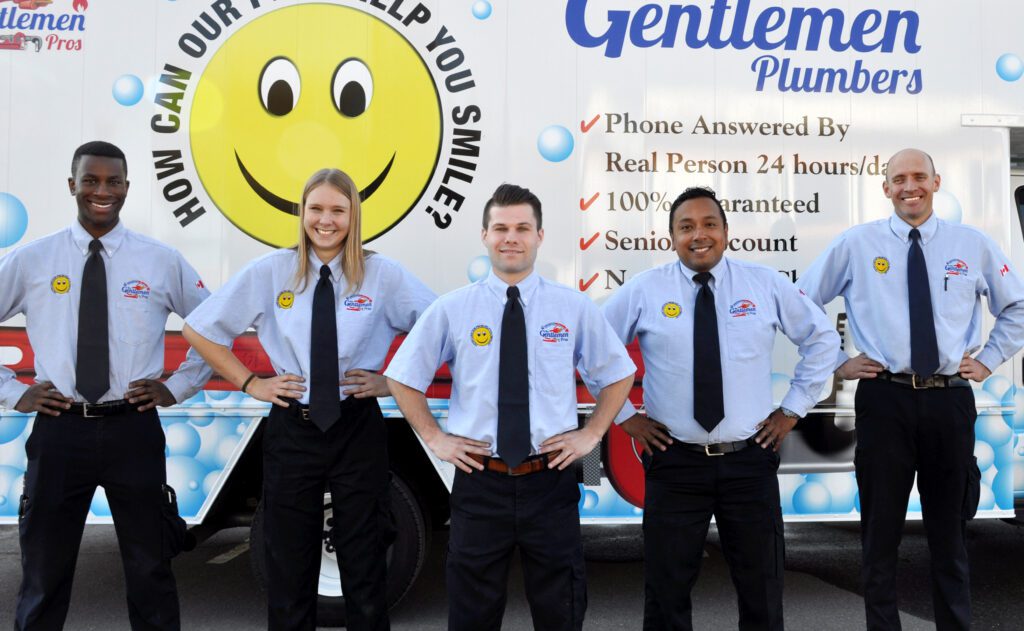
Same Day Service Since
2001
Call The Gentleman Pros Now!
(403) 879-1759

What Temperature Should I Have My House in Winter?
Edmonton winters are cold and sometimes really cold. So you want a nice warm house to relax in. But the warmer your house the more expensive your utility bill, so the trick is to find the balance between being comfortable and your finances.
Heating is the single largest user of energy in most homes. And utility bills are higher in the winter due to shorter and colder days, so lowering your temperature — even if it’s just a couple of degrees — can have a nice effect on your bill.
Here are a few recommendations for heating your home during the winter.
Day – someone home
If someone is home during the day, 20° C to 22° C, is a good range in which to set your thermometer. If you are cooking or doing chores, 18° C will be more comfortable. Though the lower the better. It’s better for your wallet (and environment) if you throw on a sweater and turn down your heat. We believe if you can wear shorts in your house in the middle of winter, your temperature is too high.
What’s comfortable for one family (or even one family member) isn’t comfortable for another. A way to adjust to a lower temperature is to do it slowly over time, ease into it. Decrease your temperature by 1° C a week. This gives you time to acclimate to the new temperature and 1° C isn’t a big deal. A 2° or 3° C decrease can be difficult to do in one jump, but spread out over two or three weeks, you’ll get used to it.
In bed or day – no one home
At night and when you are away during the day, your house doesn’t need to be as warm. Turn down your heat at night to between 16° C to 19° C. Save yourself some energy and studies show you sleep better in a cooler room. Plus with all those blankets, you’ll be very comfortable and you won’t be wasting heat.
When no one is home, use the same temperature range.
Away for an extended period of time?
If you are going to be away for an extended period of time, shut off your water and make sure the thermostat is set between 10° to 15° C to keep your pipes from freezing. The age and condition of your home will factor into your temperature decision. If you have a newer house with good insulation, you may be able to get away with a lower temperature say 10° C, but if you have an older house or a house with so-so insulation and leaky windows, you’d be better off leaving your house at 15° C. But this is a decision you’ll have to make yourself.
Programmable and smart thermostats
A programmable thermostat is a great product that can help you manage your heating costs. You set the time and temperature you want at that time. You set it and forget it!
For example:
Wake – You can set your thermostat so your furnace kicks in 15 minutes before you get up in the morning. That way your house is nice and warm when you crawl out of bed.
Leave and return – You can set the thermostat so your home’s temperature automatically lowers when you leave the house and increases when you come home. Most households have a fairly consistent schedule and you can program your thermostat to reflect it.
Sleep – You can set your thermostat to a lower temperature for when you head to bed.
Once you set the times and temperatures, a programmable thermostat does it all automatically. Most are easy to install and program on your own.
If you’d like to go one step further, you can invest in a smart thermostat. They allow you to manage your house’s temperature through your smart device and can alert you if your temperature drops below its setting when you are away for extended periods of time. They are connected to wifi, letting you change your settings while away from home. So, go for that drink after work, you can use your smart thermostat to push back the time your heater kicks in to warm up your home. More advanced smart thermostats will learn your schedule and automatically adjust the temperature for you.
Following these guidelines will help you strike a balance between your comfort and your pocketbook. Plus you won’t be wasting energy by heating your home when it isn’t needed, benefiting the environment. Really what more could you ask for?



